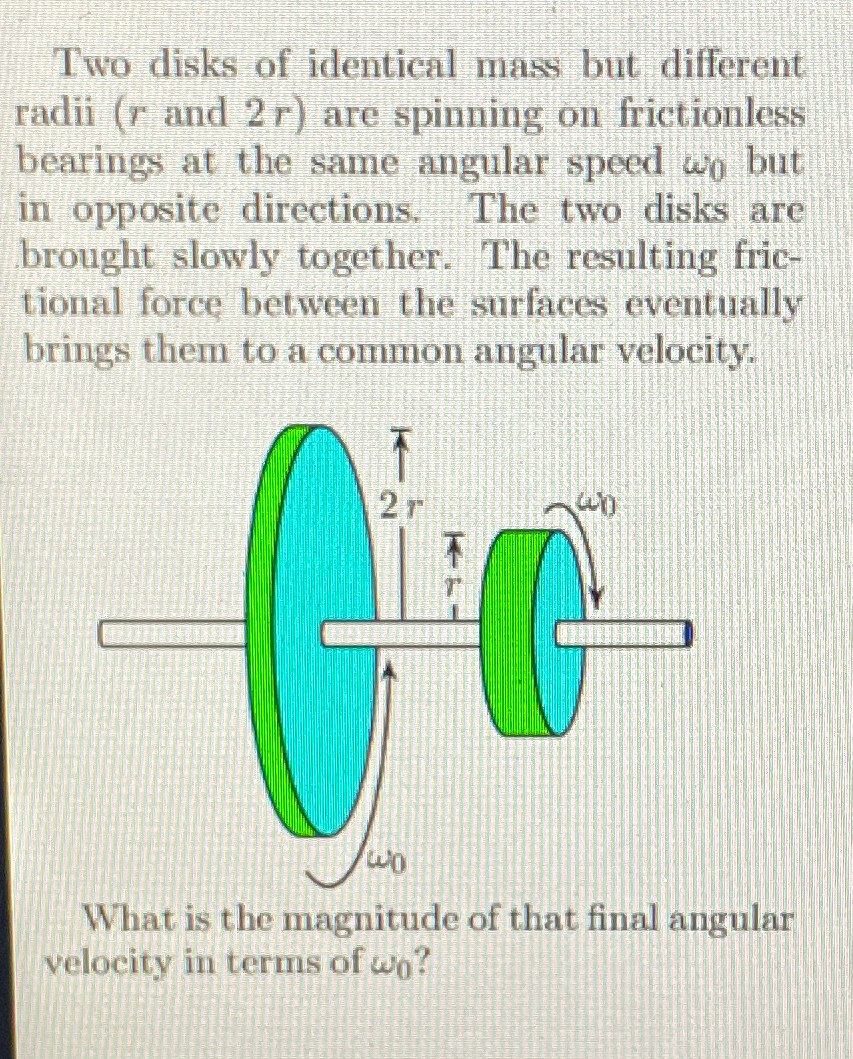Answered step by step
Verified Expert Solution
Question
1 Approved Answer
Two disks of identical mass but different radii ( r and 2r ) are spinning on frictionless bearings at the same angular speed omega _(0)
Two disks of identical mass but different radii (
rand
2r) are spinning on frictionless bearings at the same angular speed
\\\\omega _(0)but in opposite directions. The two disks are brought slowly together. The resulting frictional force between the surfaces eventually brings them to a common angular velocity.\ What is the magnitude of that final angular velocity in terms of
\\\\omega _(0)?

Step by Step Solution
There are 3 Steps involved in it
Step: 1

Get Instant Access to Expert-Tailored Solutions
See step-by-step solutions with expert insights and AI powered tools for academic success
Step: 2

Step: 3

Ace Your Homework with AI
Get the answers you need in no time with our AI-driven, step-by-step assistance
Get Started


